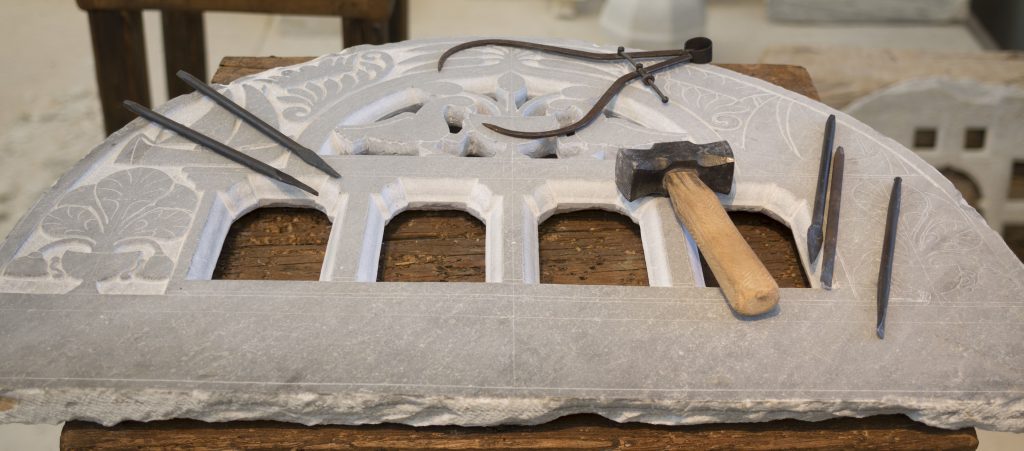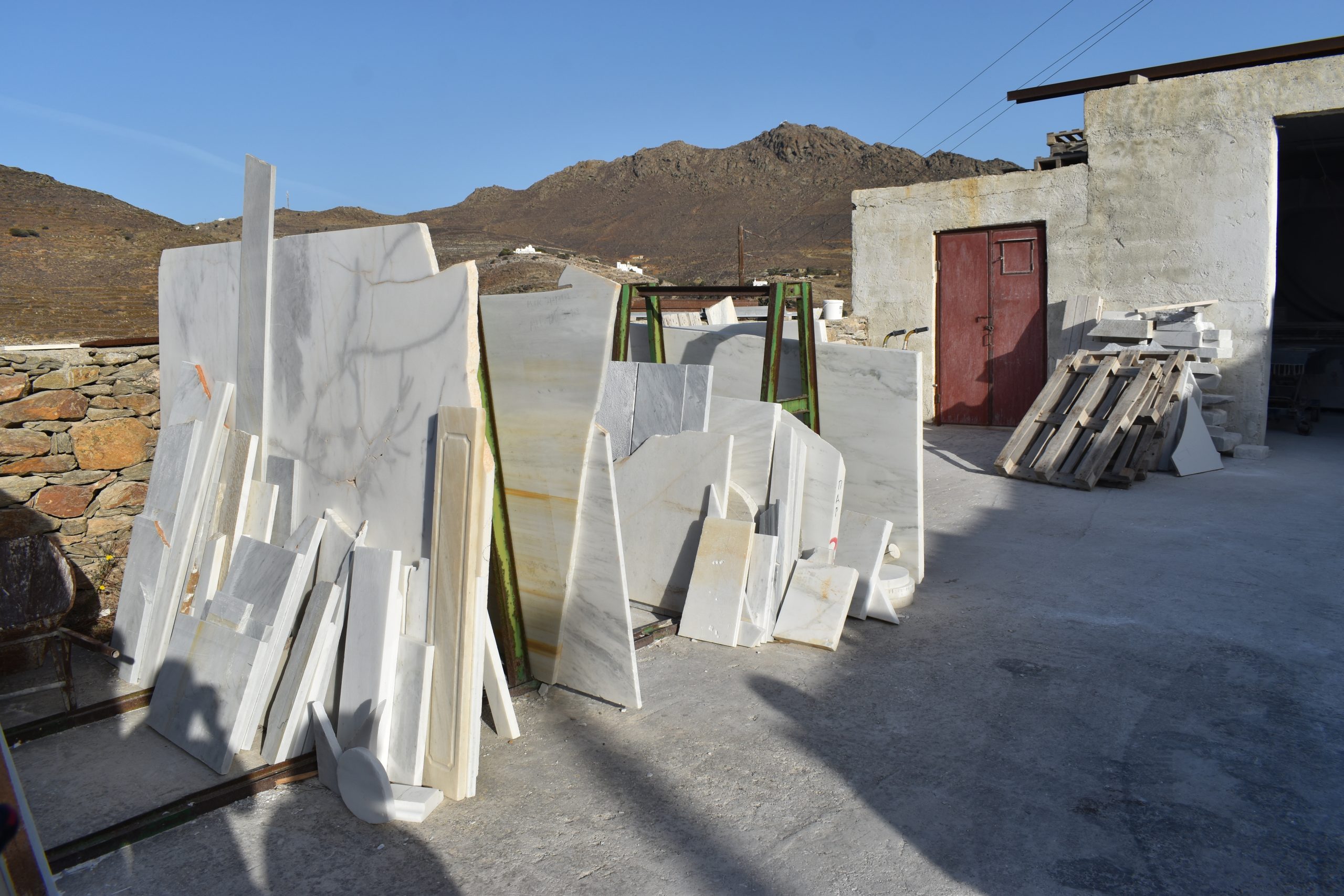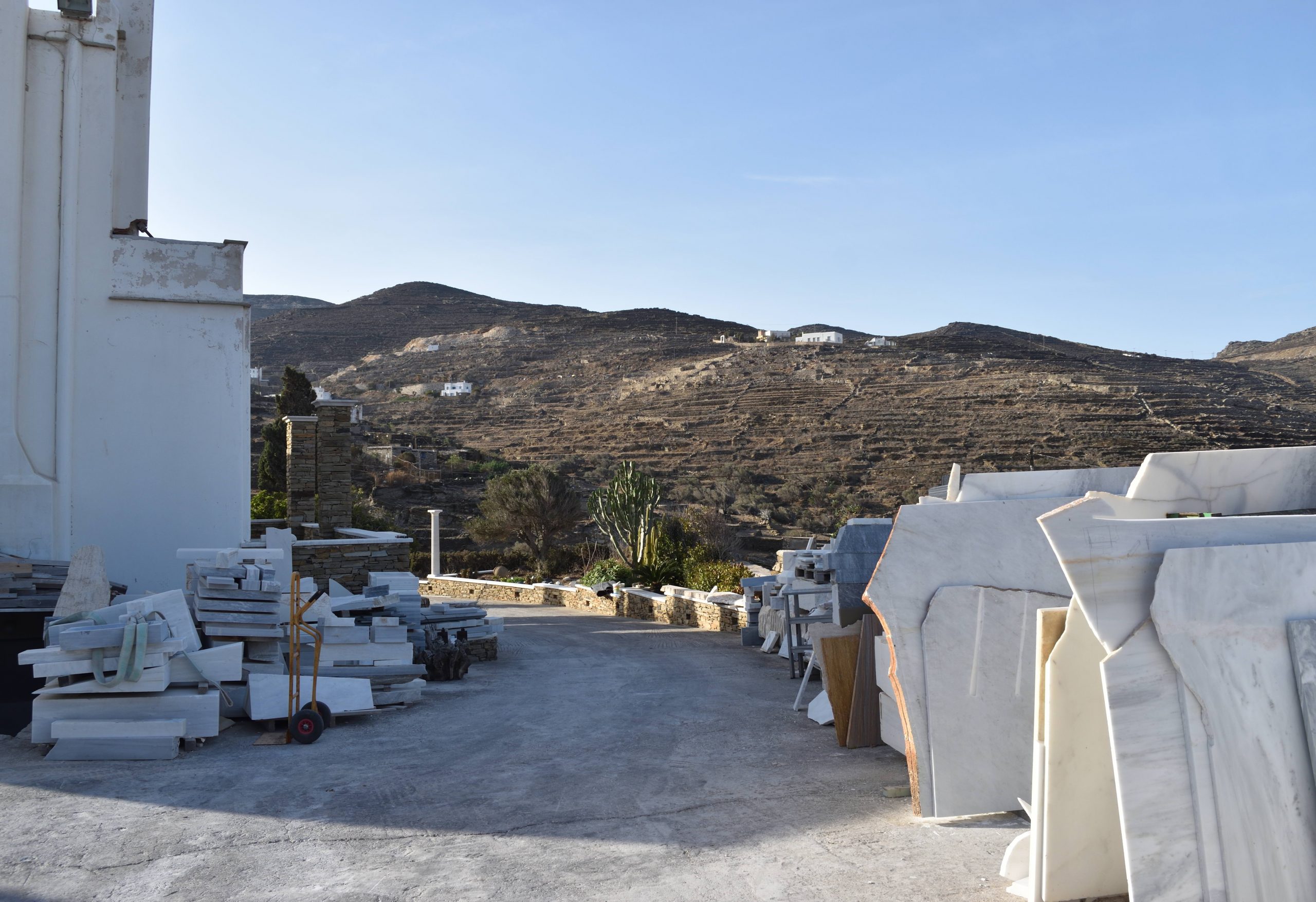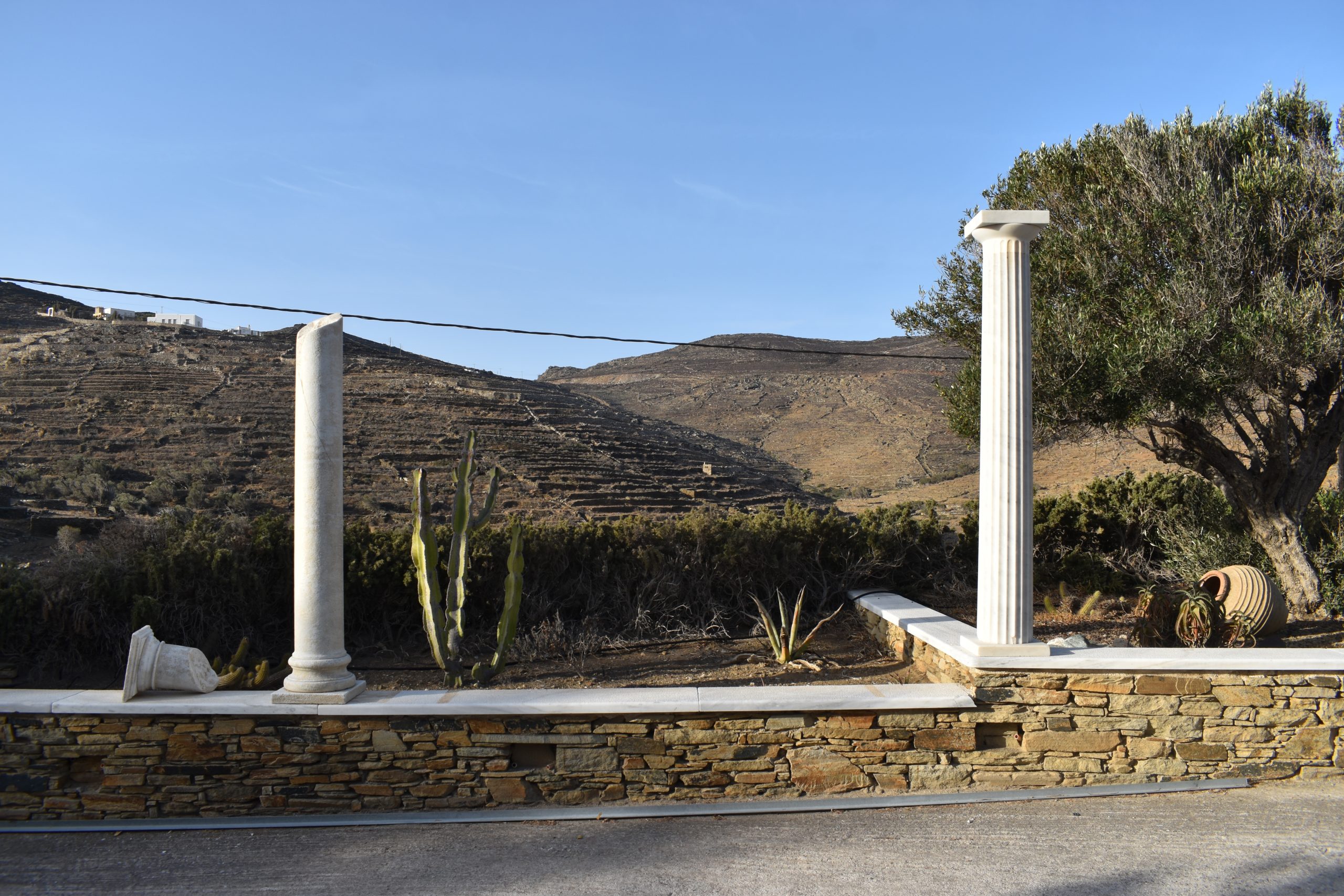Marble seems to be a unique material for crafting not only because of its beauty but also because of its consistency and attributes. During our research on marble crafting, it was noted that although marble appears thick and heavy to viewers, it is actually a sensitive material for the carver. As explained, there are different kinds of marble, each with unique properties that make them suitable for creating objects with specific characteristics.
Marble is a metamorphic rock primarily composed of calcite (a crystalline form of calcium carbonate). It forms under intense heat and pressure from limestone, which gives it its distinctive veining and varied textures. The presence of different minerals influences its colour and hardness, ranging from the pure white Carrara marble to richly veined and coloured varieties like Rosso Verona or Nero Marquina.
Marble consists of grains, also called crystals. The thinner the crystals, the more detail can be carved into the stone. Conversely, when cutting large crystals, they tend to separate from the rest of the marble, making precision carving difficult. The difference in hardness between crystal structures is something artisans can feel through their tools—when using a hammer and chisel, the chisel slides over harder crystals instead of cutting them. This is why marble suitable for sculpting should consist of small, uniform crystals.
Another key characteristic of marble is its sensitivity to heat. When carvers use an air hammer, they must take breaks and work on different areas to let the stone cool. Overheating can cause the crystals to crumble into a powder-like consistency, similar to salt. This is why water is used in cutting machines—it helps regulate the temperature and prevent the material from becoming brittle.
To illustrate how much material is removed in sculpting, Yiannis Hondrogiannis, a marble master interviewed during our visit to his workshop – Hondrogiannis in the village of Pyrgos at Tinos island, Greece shared an example: for a large sculpture depicting a bird with a nest, a 6.5-tonne marble block was used. After extensive carving, the final sculpture weighed just under one tonne. This highlights the precision and patience required in marble craftsmanship, where the artist must carefully shape the material while respecting its natural properties.

Credit: PIOP Greece. Museum of Marble Crafts.
History Overview
Ancient Art
For millennia, artists have opted for marble, a metamorphic rock, due to its soft, easy-to-carve composition and the translucence of its surface. In ancient Mesopotamia, marble was used to create crude models of animals (both naturalistic and anthropomorphic) and figures, though other mediums like limestone, diorite, and terra-cotta were used more frequently.
Similarly, ancient Egyptians artistically employed a wide variety of stone. While limestone and granite were their mediums of choice, they occasionally used marble to craft figures of pharaohs, gods, and guardians for temples and tombs. Like the Mesopotamian figures that came before, these pieces are primitive in design, showcasing flat and stylized silhouettes rather than realistic forms or lifelike details.
During Ancient Greece‘s Archaic Period of art (8th century-500 BCE), artists began to show increasing interest in marble. Though rendered with more realism than sculptures from preceding periods, marble figures from this time are not yet naturalistic, as their expressions remain relatively stoic and their poses convey little movement. During Greece’s Classical Period (500 BCE to 323 BCE), marble sculptures rose to prominence. With unprecedented interest in naturalistic representation, Classical artists began to skillfully sculpt beautiful freestanding figures and reliefs that exhibit astonishing attention to detail, idealised perception of anatomy, and refined chiselling techniques. At this time, Greek artists often opted to showcase their talents through drapery, representing clinging and hanging fabrics through intricate carving.During the Hellenistic Period (323 BCE- 31 AD), Greek artists built upon these advancements, producing pieces that were increasingly expressive and naturalistic in movement. Many well-known Greek sculptures, including Laocoön and His Sons, The Winged Victory of Samothrace, and The Venus de Milo, are from this era.
Ancient Roman sculptors are predominantly known for two types of marble sculptures: portraits, or busts, and marble copies of Greek bronzes. During the Republican Era, artists carved realistic portraits of people—including political leaders, military officials, and historians—from the chest or neck up. Known as busts, these life-sized works are celebrated for their impressively naturalistic appearance. In the Imperial Roman period (31 BCE – 476 AD), marble reproductions of bronze sculptures from Greece became increasingly popular, as “Rome’s conquest of Greece by the first century BC subjected Roman artistic taste to the influence of Greek style” (The British Museum). In many cases, these marble replicas are particularly important to art historians, as many of the bronze muses are no longer in existence. Roman copy (120–140 AD) of the ‘Apollo Belvedere’ (350–325 BCE)
The Middle Ages
During the Middle Ages (5th to the 15th century), artists in Italy continued to create sculptures using marble sourced from local quarries or salvaged from ancient ruins. Unlike sculptors of antiquity, Medieval marble artists rejected realism in favour of naive, stylized depictions. Similarly, instead of life-sized figures rooted in mythology or secular subject matter, they tended to create religious pieces like small figurines and altarpieces adorned with relief carvings. Outside of Italy, sculptors were also interested in this subject matter. However, they preferred working with ivory, stone, and wood, as marble was largely inaccessible and much more costly.
The Renaissance
During the Renaissance (14th-17th century), artists across Europe developed a renewed interest in Classical art. One of the elements Renaissance artists revived was a preference for marble, culminating in some of the most well-known sculptures in the world.
During the Italian Renaissance, enlightened artists again adopted an aesthetic interest in naturalism. While most of these artists—like Leonardo da Vinci and Botticelli—mainly produced paintings and drawings, Michelangelo also worked as a sculptor. With marble as his medium of choice, he mastered the art of monumental works, including his iconic David statue.
Like Italian Renaissance artists, figures of The Northern Renaissance found inspiration in the timeless aesthetic of Classical antiquity. While sculptors still predominantly worked in wood, some also dabbled in marble. A highlight of early Northern Renaissance marble sculpture is the Well of Moses, a large-scale piece by Claus Slute that showcases his sculpting skills through flowing drapery and expressive details. Claus Sluter, ‘Well of Moses’ (view of Isaiah), (1395-1405)
Baroque
Following the Renaissance, the Baroque Movement (early 17th-late 18th century) swept across Europe. This distinctive period is characterised by an interest in depicting dramatic subject matter in a highly ornate and elaborate aesthetic. Marble sculptures made during this time embody this approach, with artists like Gian Lorenzo Bernini specialising in intricately carved figures that are set in opulent surroundings and convey a swirling sense of movement. Gian Lorenzo Bernini, ‘The Ecstasy of St. Theresa’ (1647-1652)
Modern art
During the Modern Art movement, figurative marble sculptures remained popular thanks to Auguste Rodin, whose larger-than-life pieces showcase a level of skill and an anatomical understanding inspired by Michelangelo. “Michelangelo revealed me to myself, revealed to me the truth of forms,” Rodin explained. “I went to Florence to find what I possessed in Paris and elsewhere, but it is he who taught me this.” Modernist artist Constantin Brancusi is also known for his sculptures. Breaking away from traditional representation, his sleek marble pieces combine geometric lines and an interest in abstraction with primitive motifs.
Tinian Marble Craftsmanship
Tinian marble craftsmanship, inscribed on UNESCO’s Intangible Cultural Heritage list since 2015, is a defining expression of the cultural identity of Tinos, Greece. With a history spanning over three centuries, this craft has transcended borders, leaving an indelible mark on Neoclassical architecture and sculpture across Greece and beyond.

Credit: Danae Kaplanidi, PIOP (2023). Bus stop and marble details of the Pyrgos village, Tinos, Greece.
Work organisation
Marble-carving workshops on Tinos were often simple, small, and family-run, situated in basements, street-level shops, or even semi-outdoor spaces known as paraga, framed with timber and covered with rhododendron twigs. Larger workshops featured ample lighting through large windows and sufficient outdoor space for storing raw and worked marble blocks. The strict hierarchy of personnel within these workshops ensured the transmission of skills through generations. In the past, workshop owners (afentiko or protomastori) employed mastoroi (masters) and paragioi (apprentices), with an intermediate grade of mastorakia, who had progressed in their training but still earned lower wages. Additional specialists included the schediastis (draughtsman), triftis (smoother), and loustradoros (polisher).
Before carving, craftsmen carefully selected the appropriate marble and worked gradually, following traditional techniques. For sculptural decoration, they used drawings, stencils, and plaster casts as guides. The design was first transferred onto the marble, after which craftsmen outlined and incised the surface (simadema). The unwanted parts were then removed (xevelonisma), edges were sharpened, and the surface was smoothed (stronetai). Decorative motifs were drawn in pencil or incised freehand, sometimes using geometric instruments or stencils (formes) for repeating patterns. Craftsmen carved either the actual design (intaglio) or its background (rilievo). Non-carved surfaces were smoothed by abrasion (tripsimo) and occasionally polished to a high sheen.
Tinian marble craftsmen often formed teams (companies) to work on specific projects, collaborating between workshops or subcontracting tasks. Individual masters also worked in quarries and workshops, sometimes alone as itinerant craftsmen. The status of a master craftsman within the community was tied to the prestige of his workshop, and many workshop owners were influential figures in civic life. The craft was deeply embedded in local culture—children would mimic the craft by incising marble paving stones with nails and stones, leaving graffiti that can still be seen in village streets and museums today.
Expansion and influence
During the 19th century, as marble became the dominant building material in the new Greek capital, Tinos’ craftsmen swiftly adapted to the growing demand. They worked on major projects in Athens as early as the 1830s, notably in the Penteli quarries and the construction of the Royal Palace. Their expertise led to the establishment of renowned workshops, such as those of the Malakate brothers (‘Hermoglypheion’, c. 1835), Giannoulis Vidalis (c. 1840), and the Phytalis brothers (‘Andriantopoieion’, 1858). These workshops played a crucial role in the development of a secondary marble-carving centre in Athens, working in close connection with Tinos.
Tinian craftsmen were known for their precision in Neoclassical ornamentation and their ability to interpret architectural plans. Their artistry shaped the marble facades of mansions, churches, cemeteries, and restored ancient monuments across Greece, including Piraeus, Hermoupolis, Patras, Thessaloniki, and beyond. From this tradition emerged some of the most celebrated sculptors of modern Greece.
Transmission and Continuity
Marble-carving workshops continue to produce traditional motifs, including cypresses, flowers, birds, and ships, which carry symbolic meanings rooted in religious, magical, and oral traditions. Such motifs adorn buildings, road signs, churches, and cemeteries, ensuring protection and prosperity. Transmission of knowledge follows long-established traditions, with apprentices beginning with basic tasks such as arranging tools and cleaning before advancing to drawing and carving under a master’s guidance. Once they achieve the status of master craftsperson, they are presented with a chest of tools, marking their initiation into the profession.
In recent years, the craft has seen a shift in gender roles, with nearly a quarter of practitioners now being women—a significant change in what was traditionally a male-dominated field.
Tinos’ marble craftsmanship remains a living tradition, continuously evolving while preserving its deep-rooted heritage, ensuring that its exquisite artistry continues to shape cultural landscapes both in Greece and internationally.
Museum of Marble Crafts
The Museum of Marble Crafts located in Pyrgos on the island of Tinos, is a distinctive venue showcasing the technology behind marble, a material that has played a significant role in Greece’s architecture and art, from ancient times to the present day. The permanent exhibition offers a detailed and dynamic exploration of the tools and techniques used in marble work, with a focus on pre-industrial and proto-industrial Tinos, which was the most important centre of marble craftsmanship in Modern Greece. Additionally, the museum highlights the social and economic context in which the local workshops developed.




